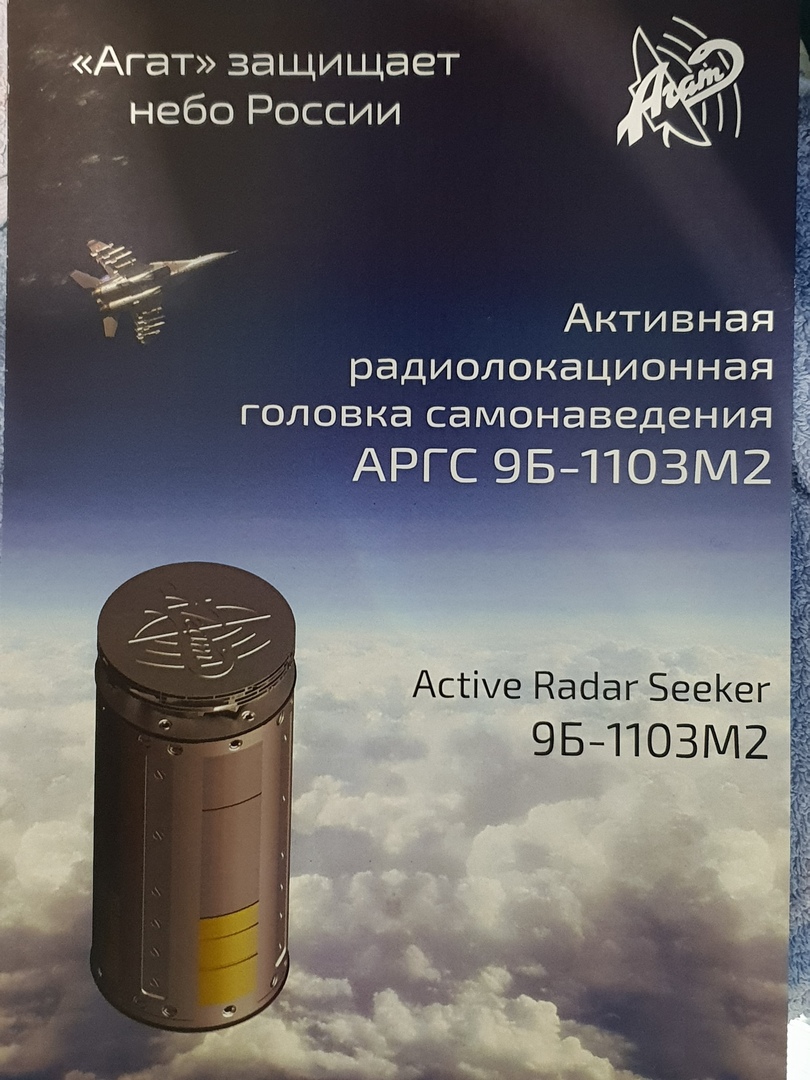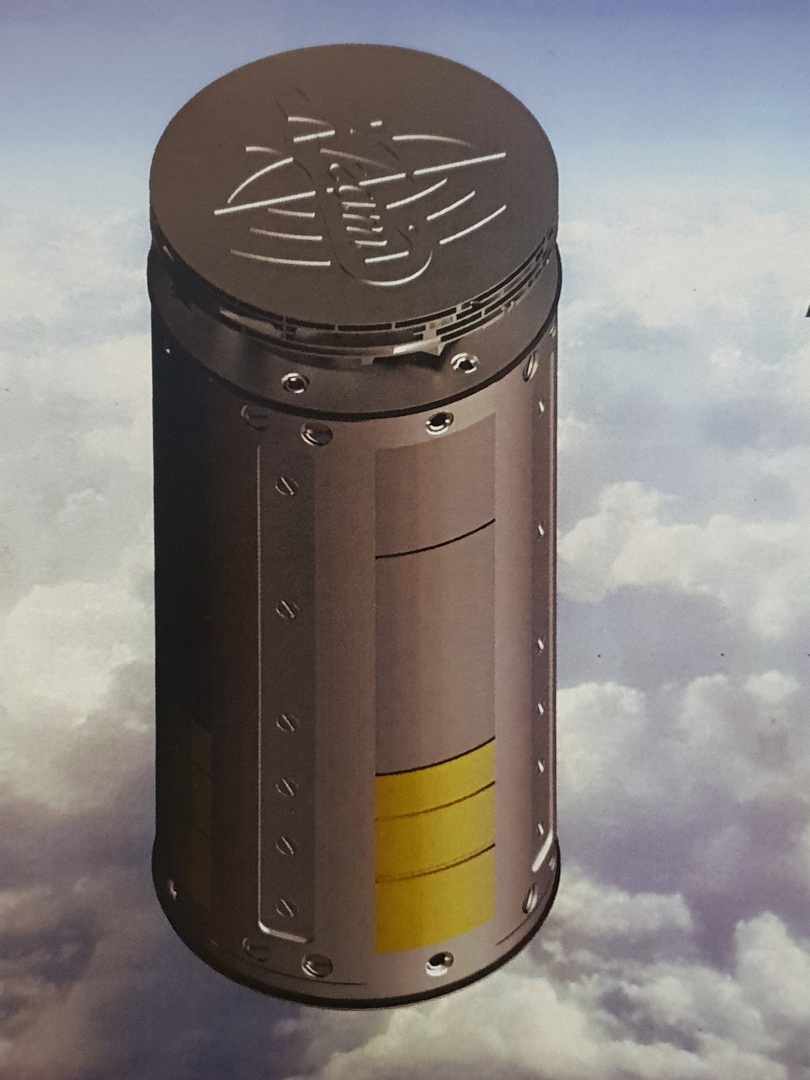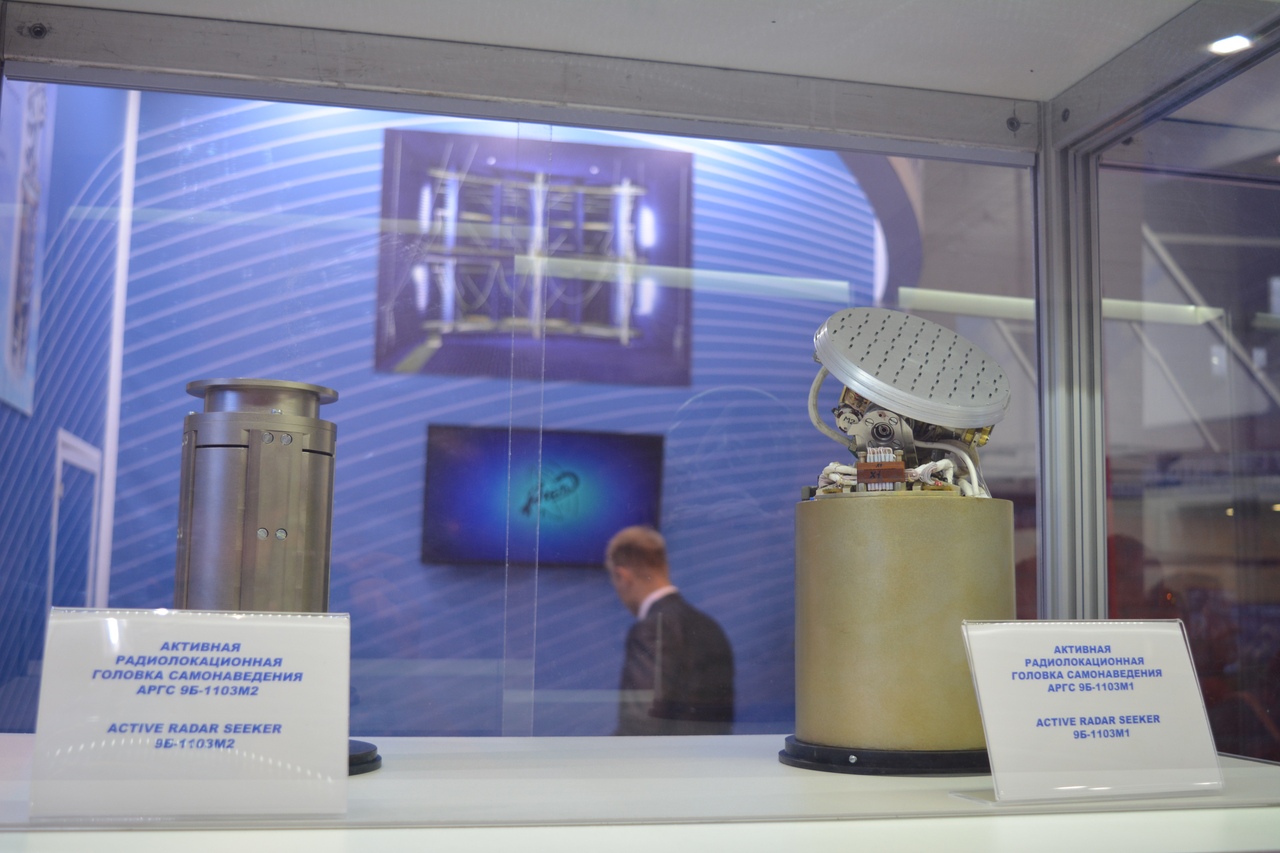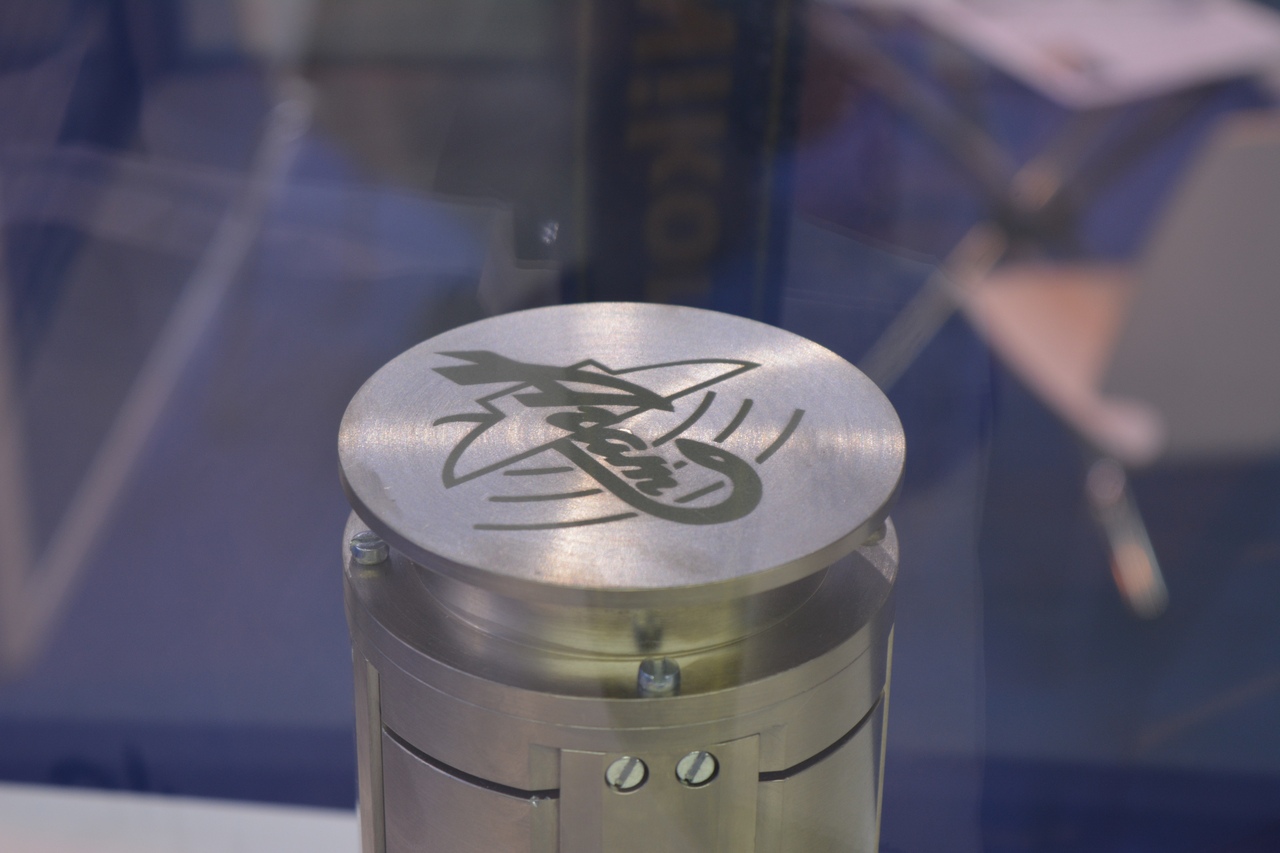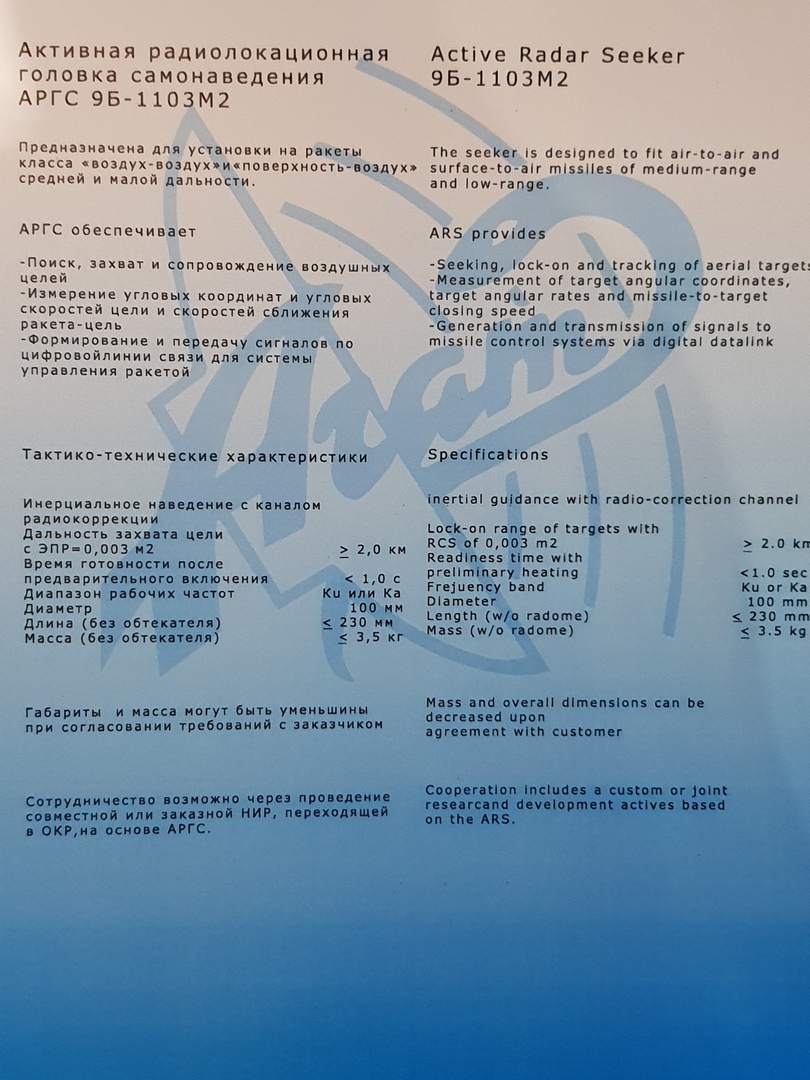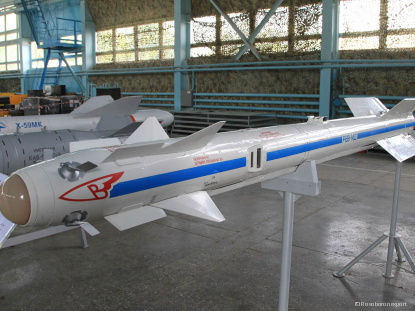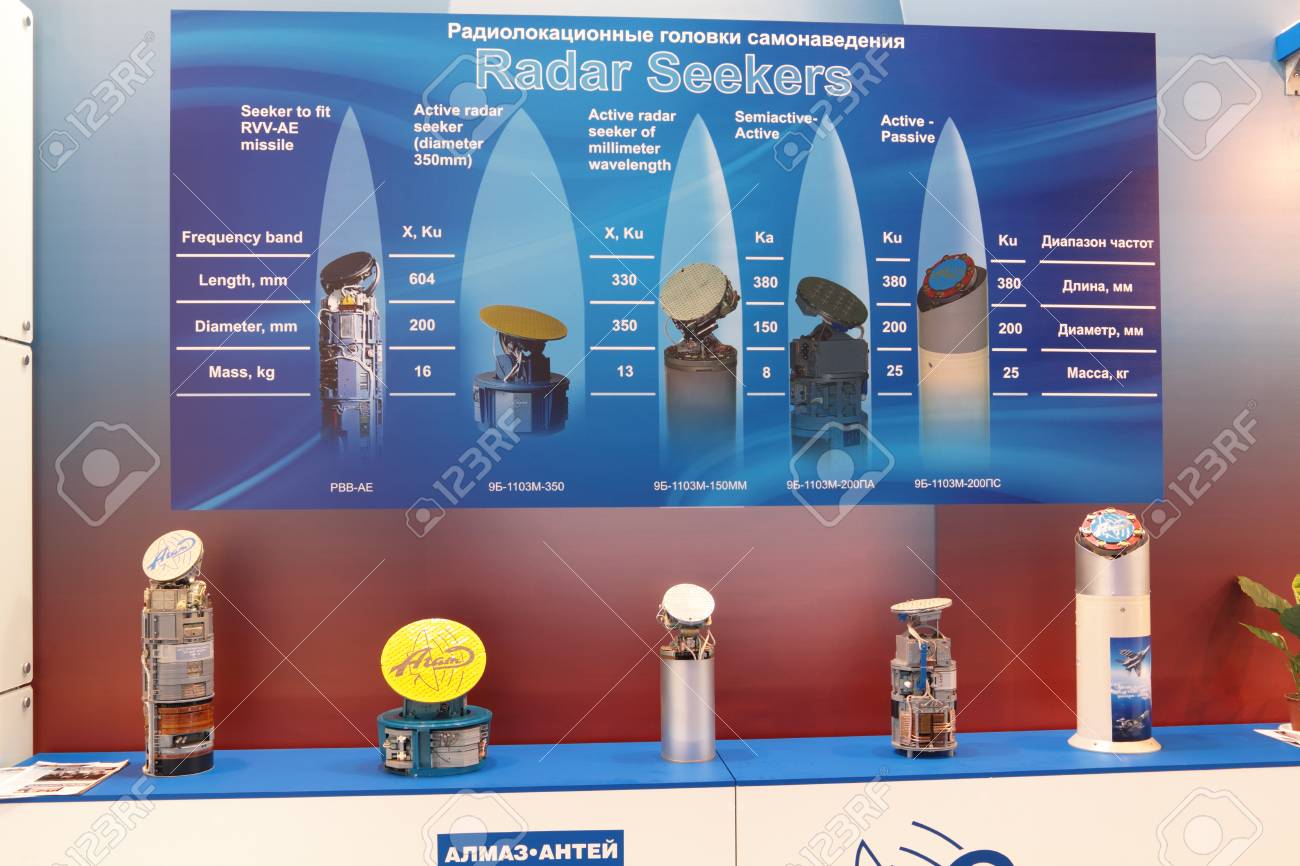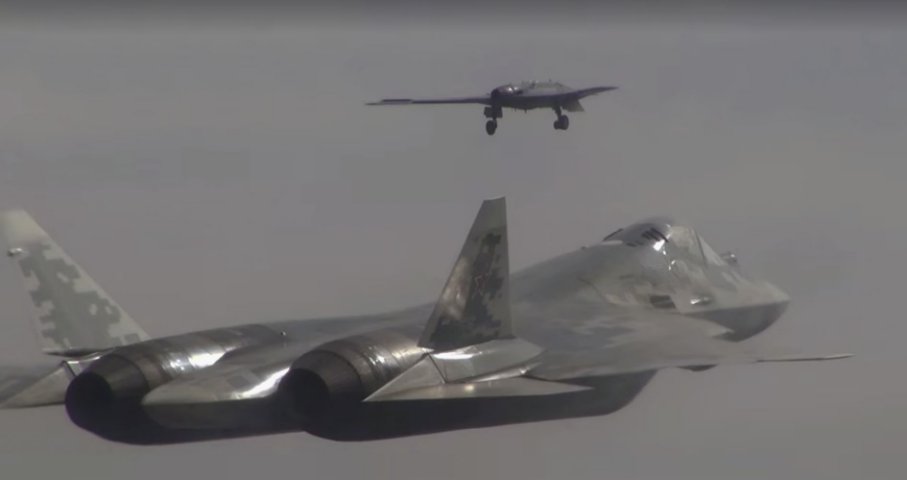At ARMY 2019 , design Bureau "Vympel" demonstrated its new development – a missile "air-air" which exceeds in its parameters the existing missiles of this class. "Product 180" is a new missile received index K-77M, which will be initially installed on su-57, and in the future may go for export abroad. Виктор Анисимов: Россия создала уникальную ракету «воздух-воздух». Подробности об «Изделии 180»
Key Features:
New Dual Pulse Motor
AESA Radar Seeker for Missile
Range of 190 km+ at High Altitude & High Altitude Manouvering Capability
New aerodynamic scheme with X-shaped wings that reduces drag and as a consequence increased range
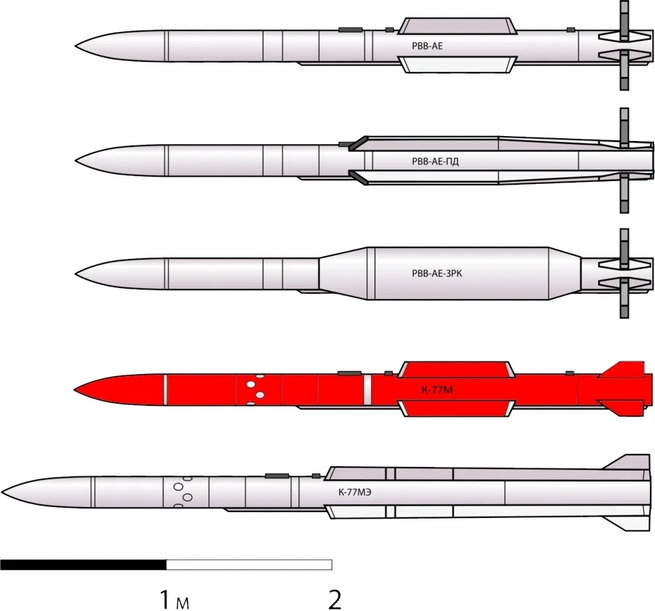
In the framework of military-technical forum "Army-2019" design Bureau "Vympel" demonstrated its new development – a missile "air-air" which exceeds in its parameters the existing missiles of this class.
"Product 180" is a new missile received index K-77M, which will be initially installed on su-57, and in the future may go for export abroad.
And though the rocket received index K-77M, but it has nothing to do with the missile K-77. The rocket is produced with a new aerodynamic scheme with X-shaped wings that reduces drag and as a consequence increased range.
Rocket in addition to the main wing (2 in diagram below) also added a stationary aerodynamic surface (4) before "driving" (3), which allowed to solve the main problem of all long-range missiles "air-air", namely the ability to maneuver at subsonic speeds. For example, the famous American missile AIM-120 and its recent modernization the AIM-120D have not been able to maneuver at speeds of less than 1200 km/h (while trying to maneuver increased angle of attack, and the rocket began to disintegrate.)

Also the missile is equipped with a double-pulse solid-propellant engine, which allowes high-altitude maneuvering and enables a range of up to 192 kilometers.
In addition, the missile is equipped with inertial navigation system and active radar homing head.
All these changes make the new missile K-77M a truly unique and a real formidable weapon.
Experts pay attention that apparently the Russian defense Ministry are very serious about the project su-57 and to develop this fighter is really unique weapons that have no analogues in the world. We already know that the su-57 would be installed a shorter version of hypersonic missile "Kinzhal" gliding cluster bomb "Drel", and now the missile K-77M. All of these types of weapons created recently and is unique in its characteristics.
Key Features:
New Dual Pulse Motor
AESA Radar Seeker for Missile
Range of 190 km+ at High Altitude & High Altitude Manouvering Capability
New aerodynamic scheme with X-shaped wings that reduces drag and as a consequence increased range

In the framework of military-technical forum "Army-2019" design Bureau "Vympel" demonstrated its new development – a missile "air-air" which exceeds in its parameters the existing missiles of this class.
"Product 180" is a new missile received index K-77M, which will be initially installed on su-57, and in the future may go for export abroad.
And though the rocket received index K-77M, but it has nothing to do with the missile K-77. The rocket is produced with a new aerodynamic scheme with X-shaped wings that reduces drag and as a consequence increased range.
Rocket in addition to the main wing (2 in diagram below) also added a stationary aerodynamic surface (4) before "driving" (3), which allowed to solve the main problem of all long-range missiles "air-air", namely the ability to maneuver at subsonic speeds. For example, the famous American missile AIM-120 and its recent modernization the AIM-120D have not been able to maneuver at speeds of less than 1200 km/h (while trying to maneuver increased angle of attack, and the rocket began to disintegrate.)
Also the missile is equipped with a double-pulse solid-propellant engine, which allowes high-altitude maneuvering and enables a range of up to 192 kilometers.
In addition, the missile is equipped with inertial navigation system and active radar homing head.
All these changes make the new missile K-77M a truly unique and a real formidable weapon.
Experts pay attention that apparently the Russian defense Ministry are very serious about the project su-57 and to develop this fighter is really unique weapons that have no analogues in the world. We already know that the su-57 would be installed a shorter version of hypersonic missile "Kinzhal" gliding cluster bomb "Drel", and now the missile K-77M. All of these types of weapons created recently and is unique in its characteristics.

